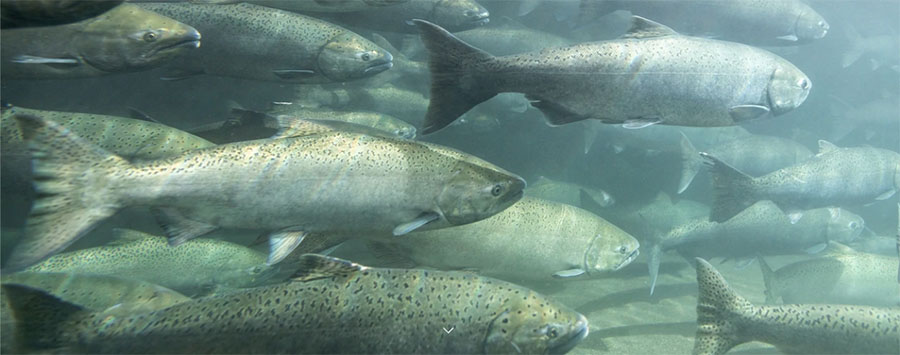Spring-run Chinook salmon, critical to Indigenous fishers along the Klamath River, are in steep decline. But two recent developments may offer a path to their recovery.
||| FROM NATIONAL GEOGRAPHIC |||
When Karuk tribal member and cultural biologist Ron Reed was just a toddler in the early 1960s, he liked to crouch on a rounded rock poking out of the rushing water of California’s Klamath River, watching his family fish for the Chinook salmon that arrived in late spring. The fish crowded so thickly in the water that they looked nearly solid enough to walk across.
His family had waited through the long winter for these fish. They would fill sacks full of salmon, enough to feed them several times a day for months.
Those days of extreme abundance are decades gone. For the past few years Reed, fishing now with his own children, has taken only a few spring-run fish from the river. Dams, climate change, and other issues have wreaked havoc on salmon along the U.S. West Coast, and the declines have been particularly acute for the spring-run fish, which migrate farther upstream and so are more likely to have been cut off from their habitat by the dams.
But on November 17, a long-delayed project to remove some of the major dams on the Klamath cleared a major hurdle: The governors of California and Oregon agreed to take control of the dams from PacifiCorp, the utility that operates them. The states and the utility have also agreed on financing for the $450 million plan. Federal regulatory approval is still required, and nothing is certain—but for now the dams are back on track for removal starting in 2023.
And that raises the question: Can spring-run salmon still be saved on the Klamath?
With spring-run numbers at record lows in many rivers, tribes and conservation groups have pinned their hopes on getting the spring fish designated as a distinct population and protected under the Endangered Species Act. They think that would help to protect the fish long enough for the dams to come down and their habitat to be restored.
New research published last month in Science confirms that there is a genetic difference between the early- and late-migrating fish. The difference is crucial but tiny: “In the biological sense, they’re not different animals,” says John Carlos Garza, a fisheries scientist at NOAA and one of the authors of the study. That could complicate an ESA designation.
However, the gene that enables spring migration turns out to be more prevalent in fish that swim the Klamath and other rivers than scientists had thought—and that, Garza says, raises hopes that the spring-migrating fish could be restored once the dams are gone.
READ FULL ARTICLE: www.nationalgeographic.com/environment/article/dam-removal-project-genetic-discovery-could-be-good-news-for-key-salmon-species
**If you are reading theOrcasonian for free, thank your fellow islanders. If you would like to support theOrcasonian CLICK HERE to set your modestly-priced, voluntary subscription. Otherwise, no worries; we’re happy to share with you.**








